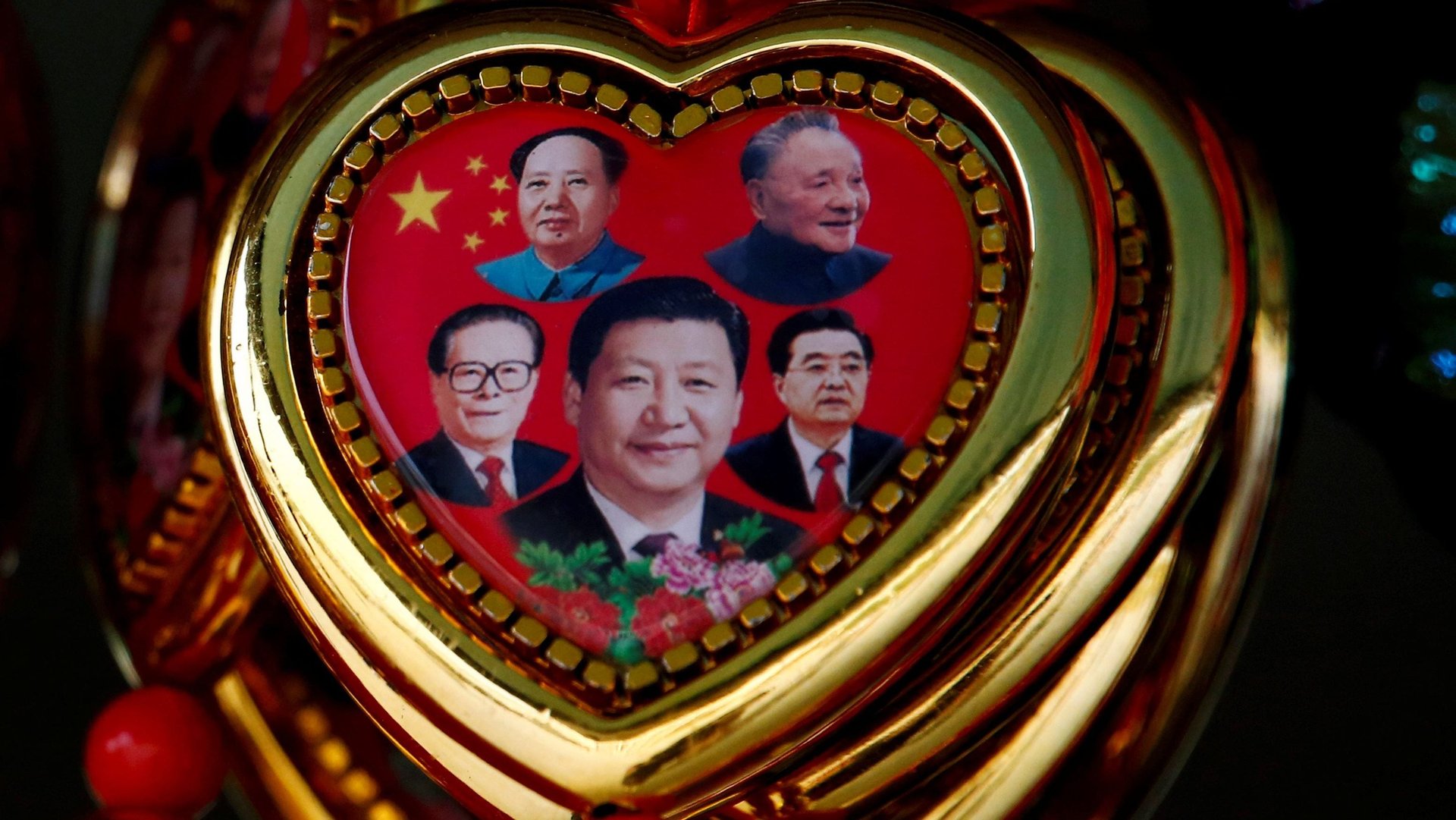A journalist just caught China in the act of revising its history
In Chinese history, the late politician Deng Xiaoping is widely recognized as the “father” of the reforms that opened up the country’s economy starting in the late 1970s, eventually turning China into an economic powerhouse. His political life was marked by reversals of fortune. Now, his memory is being displaced on museum walls by the Chinese Communist Party’s most powerful leader in decades.


In Chinese history, the late politician Deng Xiaoping is widely recognized as the “father” of the reforms that opened up the country’s economy starting in the late 1970s, eventually turning China into an economic powerhouse. His political life was marked by reversals of fortune. Now, his memory is being displaced on museum walls by the Chinese Communist Party’s most powerful leader in decades.
When a journalist in Beijing went to an exhibit on the 40th anniversary of China’s reforms at the National Museum of Art, he was startled to see the father most celebrated at the museum was not the figurative one—but rather Xi Zhongxun, the actual father of current president Xi Jinping.
President Xi is what’s known in China as a “princeling,” a child of a senior Communist Party leader. The elder Xi fought alongside Mao Zedong during the Chinese civil war in the years before the Communists established the People’s Republic of China in 1949. The younger Xi spent some of his childhood years in the Beijing compound for party elite before his family was caught up in the chaos of the Cultural Revolution and hounded, and he was dispatched to a village. Despite his family’s persecution under Mao, he followed in his father’s footsteps—but has far surpassed him in terms of his political stature, becoming party general secretary in 2012, the most powerful political role in China.
The exhibition, which consists of dioramas, large paintings, and statues, puts Xi senior and junior in the limelight, according to a series of tweets by Benjamin Carlson, a correspondent in China for French wire service Agence France-Presse. In one large painting, Xi’s father is—oh, the simple, down-to-earth man—standing in a field, his pants rolled up, talking to a group of delighted peasants whom he towers over. In another painting, Xi appears similarly informally clad, a nod to his praised visit to Hebei province in central China in 2013. Meanwhile, a statue of Deng is in a side room of the exhibit, Carlson notes.
At last year’s 19th party congress, Xi Jinping’s ideology—Xi Jinping Thought—and his name were written into the party constitution, a privilege only enjoyed by Mao while still in power. And earlier this year, Xi oversaw the removal of term limits for the offices of president and vice-president, which gives him the ability to rule indefinitely if he so chooses. One reason he might wish to do so is in order to oversee China’s next period of transformation, as the country tries to move its economy away from exports, and become a greater force on the world stage.
While Xi doesn’t have to worry about elections to stay in power, it’s still nice to have legitimacy and approval. One way to secure that is to associate himself more strongly with the last period of successful transformation in China—if not directly, as he was just graduating from Tsinghua University at the start of the reforms, then indirectly, via his father. Another good reason to distance Deng in public memory? Deng, scarred by his experience of the Mao era, is the one who instated term limits in the first place.
All nations engage at times in historical doctoring, erasure, outright fabulation, or leveraging of history for contemporary aims. It’s certainly no surprise that the Communist Party does so constantly. Examples abound. But, as Carlson noted, “it’s unsettling to see it happen before your eyes.”